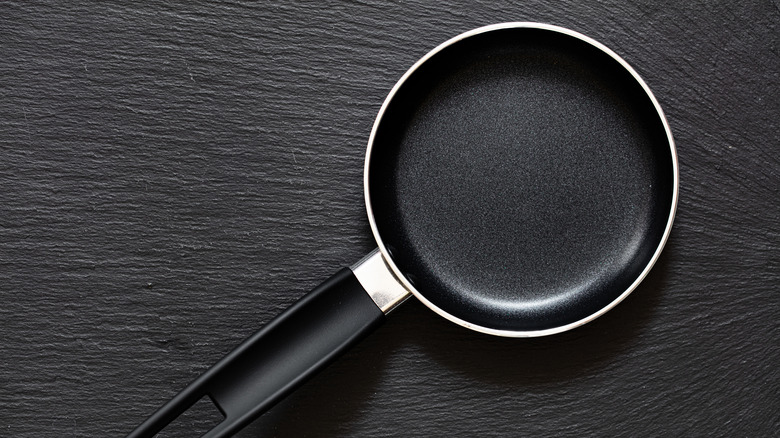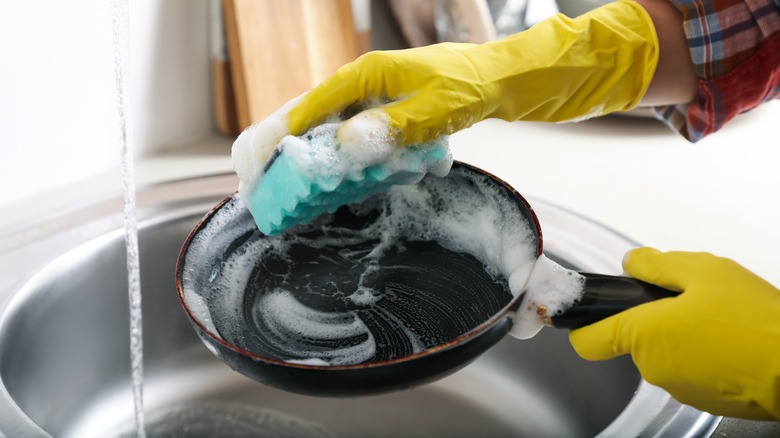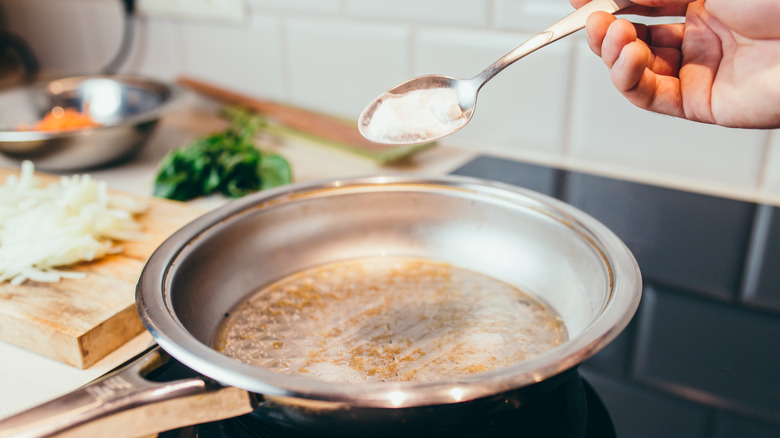Not Sure How To Clean Your Ceramic Pan? We've Got You Covered
Ceramic pans often feature a non-stick coating, which reduces the need for oil to coat the pan. This can also make cleaning the dishes easier once you're finished cooking, since the food will often wipe right off with a gentle scrubbing. Of course, your cookware should still be washed after every use. Allowing food residue to stay on the pan could make way for bacteria to build up over time.
Before you even begin cooking with your ceramic pan, you'll want to give it a quick wash as soon as you bring it home. The pan's surface could pick up dust, debris, and bacteria from the factory, while being shipped, or in the store before you bring it home. Carefully wipe it down with a soft sponge soaked in warm, soapy water, then rinse and dry it before cooking.
After you've cooked with your pan, you'll need to wash it thoroughly in preparation for cooking your next meal. Though the convenience may be tempting, your ceramic pans should never be put in the dishwasher — they should always be hand-washed.
A basic wash is quick and easy
First off, it's important to allow the ceramic pan to cool down before you wash it. If your pan is still sizzling from the heat of the stovetop, transferring it to cold water in the sink could cause the pan to warp. This common pan-cleaning mistake can alter the surface of your new cookware, which will result in an uneven cook on your food in the future. Instead of washing up right away, it's best to let the pan rest while you enjoy your freshly cooked food, then return to the kitchen to clean it up later.
Once the pan is cooled and ready to wash, fill your sink with some warm water and dish soap. Then, grab a non-abrasive sponge or dishcloth. Harsher cleaning materials, like scrubber sponges or steel wool, should be avoided. Both of these can scratch the surface of the pan and damage the nonstick coating. Gently scrub the pan, making sure to remove any stuck-on foods. Then, it can simply be rinsed and dried.
Although a basic cleaning may be sufficient after every use, your ceramic cookware may require a deeper clean every so often if food starts sticking to the surface.
Your pan may need a deeper clean
When your pan has some stubborn burnt-on food remaining after the initial wash, it may require some extra effort to clean. If a little added elbow grease with a sponge just isn't cutting it, try allowing the pan to soak for a while. Resting in the water may loosen the food and allow it to be wiped away more easily.
If soaking still doesn't get the food off, it may be time to bring in some reinforcements. While the sponge is still wet, dip it in some dry baking soda and gently scrub the pan. Then, once the baking soda paste has coated the cookware, pour in a little bit of vinegar. The reaction may loosen the food and make it easier to remove with another scrub.
For more intense stuck-on food, allow the baking soda and water paste to sit on the pan for about half an hour before scrubbing. If you're still at a stalemate, leave a mix of water and vinegar in the pan for a few hours before you try washing it again. Then, once the food has been removed, simply wash it as normal with dish soap.
Ensuring that your ceramic pans stay properly cleaned is an important step for preserving the integrity of your cookware. If you keep the nonstick surface protected, your food will come out with a nice, even cook every time and you won't have to toil over removing food residue that won't budge.


